May 30, 2024
The southwest monsoon makes an early appearance, Russian lentils are threatened by drought, and Argentinian beans fall foul of early frosts – we take a look at the week in weather in the major pulse production zones.
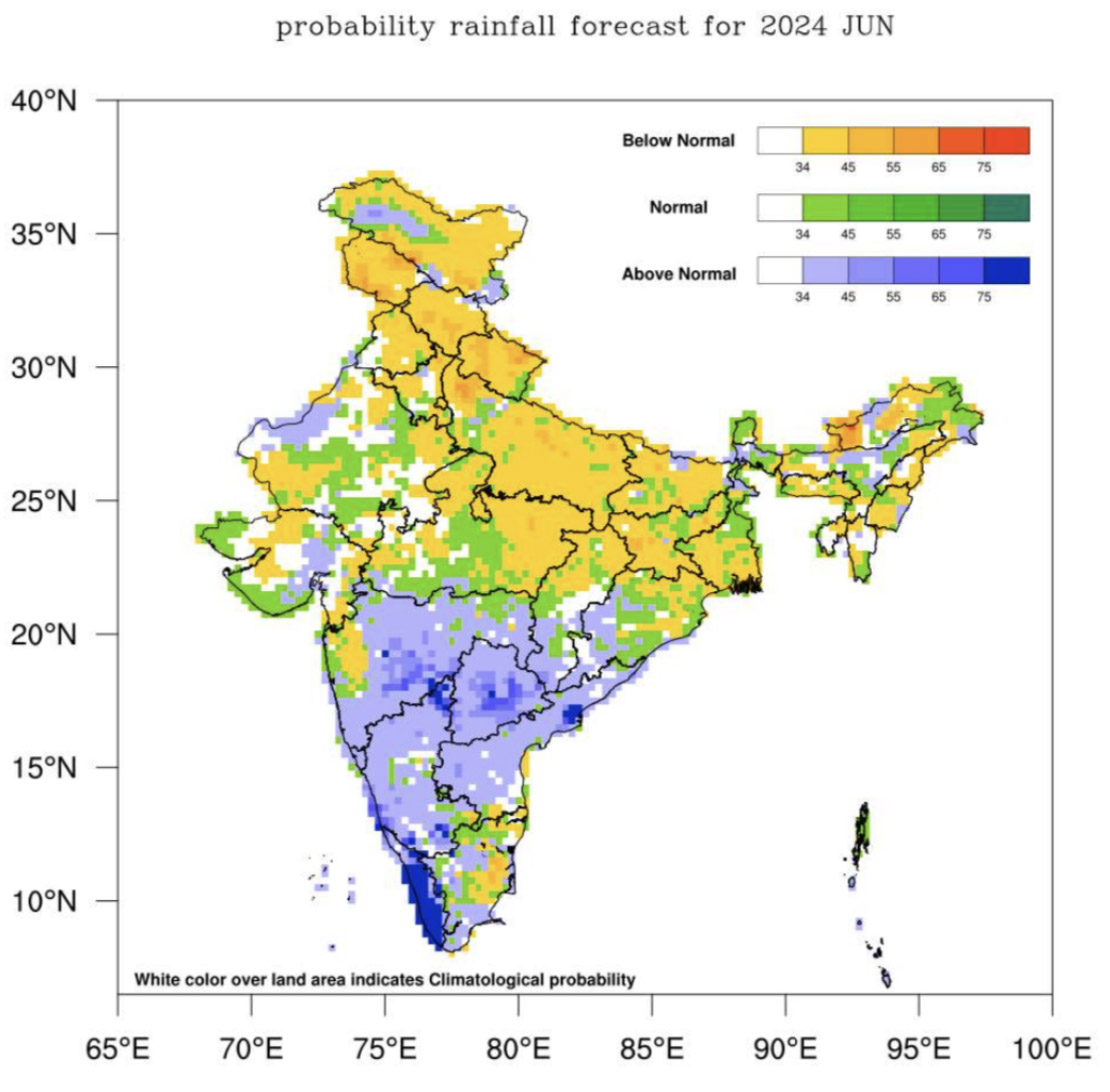
IMD Probability Rainfall Map – June 2024
According to projections released by the India Meteorological Department (IMD) this week, the Monsoon Core Zone, where most of the rain fed agricultural crops are found, are likely to receive above normal rains (>106% of the Long Period Average). Kharif crops would benefit significantly from these rains, especially if they are evenly distributed. Soil moisture would also positively impact Rabi crops come the winter seedings. A monsoon update from the India Pulses and Grains Association (IPGA) on May 30 indicates that the south-west monsoon has already arrived in Kerala and has advanced into much of north-east India, a full two days before the expected June 1 date, and a full six days before the 'normal' date for the monsoon.
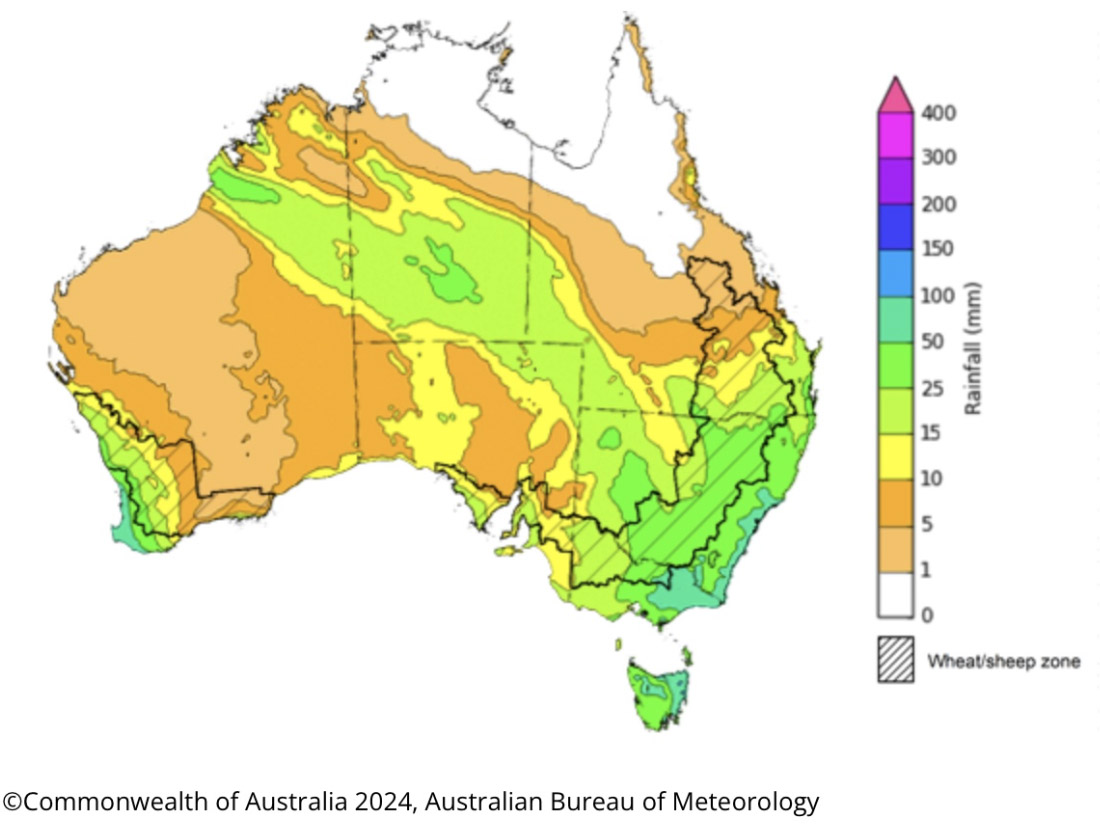
Australian Bureau of Meteorology Rainfall Map May 30 – June 6
Crops in Western Australia have received ample rains this week, which augurs well for crops already planted in dry soils. Rain has begun to fall in South Australia and Victoria and is expected in New South Wales by the weekend. For June and August, 'widespread (rain)falls’ are expected in much of Australia's cropping regions with the strongest rainfall coming to New South Wales, Victoria, southern Queensland and the west side of Western Australia – these areas are predicted to receive between 10-50 mm of rain according to the ABARES Weekly Climate, Water and Agricultural Update. For the same period, the likelihood of the cropping regions seeing above-average rainfall is currently between 40-75% with some below-average rainfall in some areas across South Australia. The same report states that "expected rainfall totals will likely be sufficient to support growth and establishment of winter crops and assist in maintaining above-average forecasts of winter crop yields."
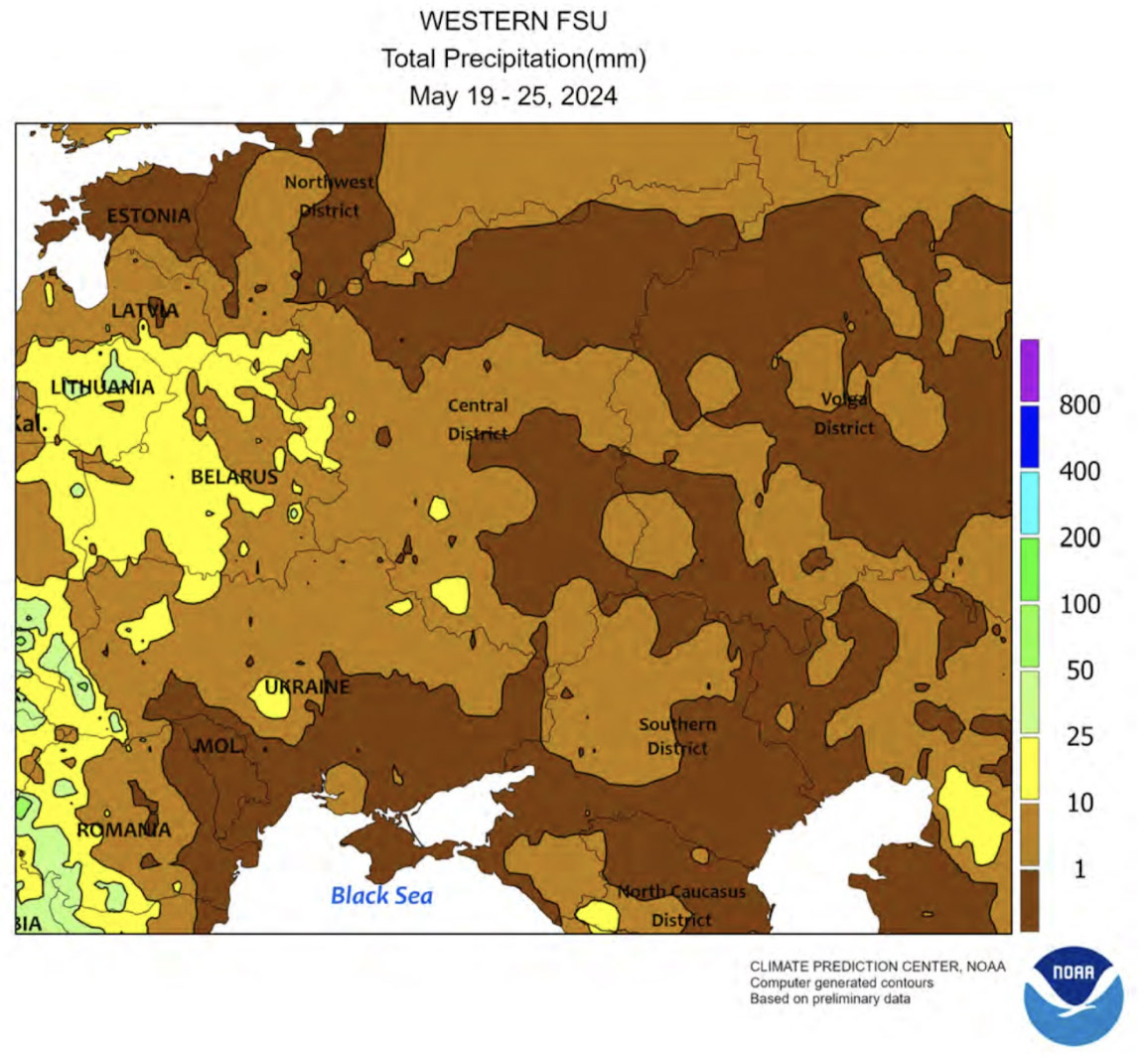
NOAA Western Russia Total Precipitation for May 19 – 25
A May 30 report from the IPGA suggests that late-season frosts not seen in over a hundred years have impacted the lentil growing zones of Samara, Saratov and Siberia – the extent of the damage is as yet unclear. The same report indicates that Russia's southern region and the east of Ukraine may be "vulnerable to production cuts (to lentils) if significant moisture does not fall in the next few weeks." Current weather predictions suggest rain should come to southern Russia and eastern Ukraine over the next week, but the positive impact on crops may be tempered by high temperatures. The USDA Weekly Weather and Crop Bulletin puts season-to-date rainfall down to “33 and 29% of normal in Saratov and Rostov Oblasts.” Current weather predictions suggest rain should come to southern Russia and eastern Ukraine over the next week, but the positive impact on crops may be tempered by high temperatures.
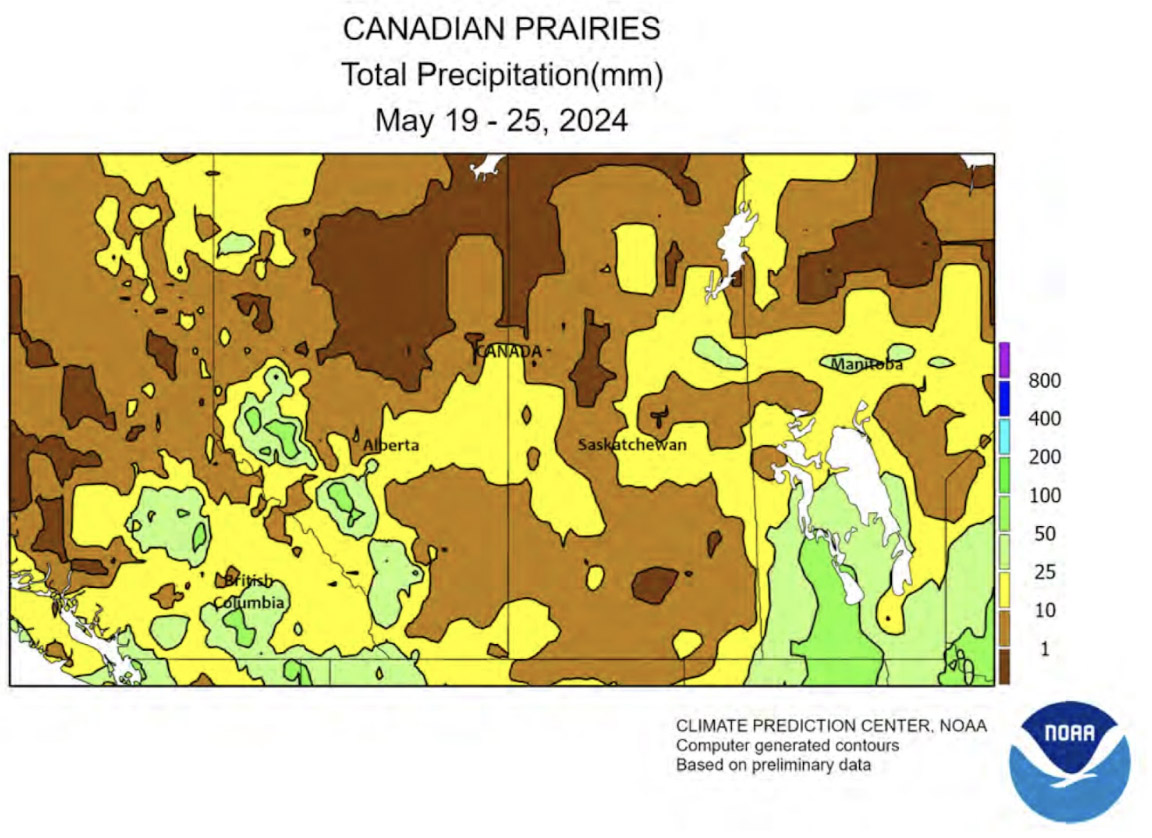
NOAA total precipitation for Canadian Prairies May 19 – 25
Heavy rains and even snow were seen across southern Manitoba over last week, topping off extremely wet end to May ahead of dry bean planting that typically takes place between June 6-10 and field pea planting, which has a seeding deadline of June 15. This week’s Manitoba Agriculture crop report showed significant rainfall over the last week, especially in the Central region. Alberta has also had a week of rainfall as well as reports of some light snow and hail. Within the province, both subsurface soil moisture and surface soil moisture have been rated between good and excellent, sitting above both 5- and 10-year averages.
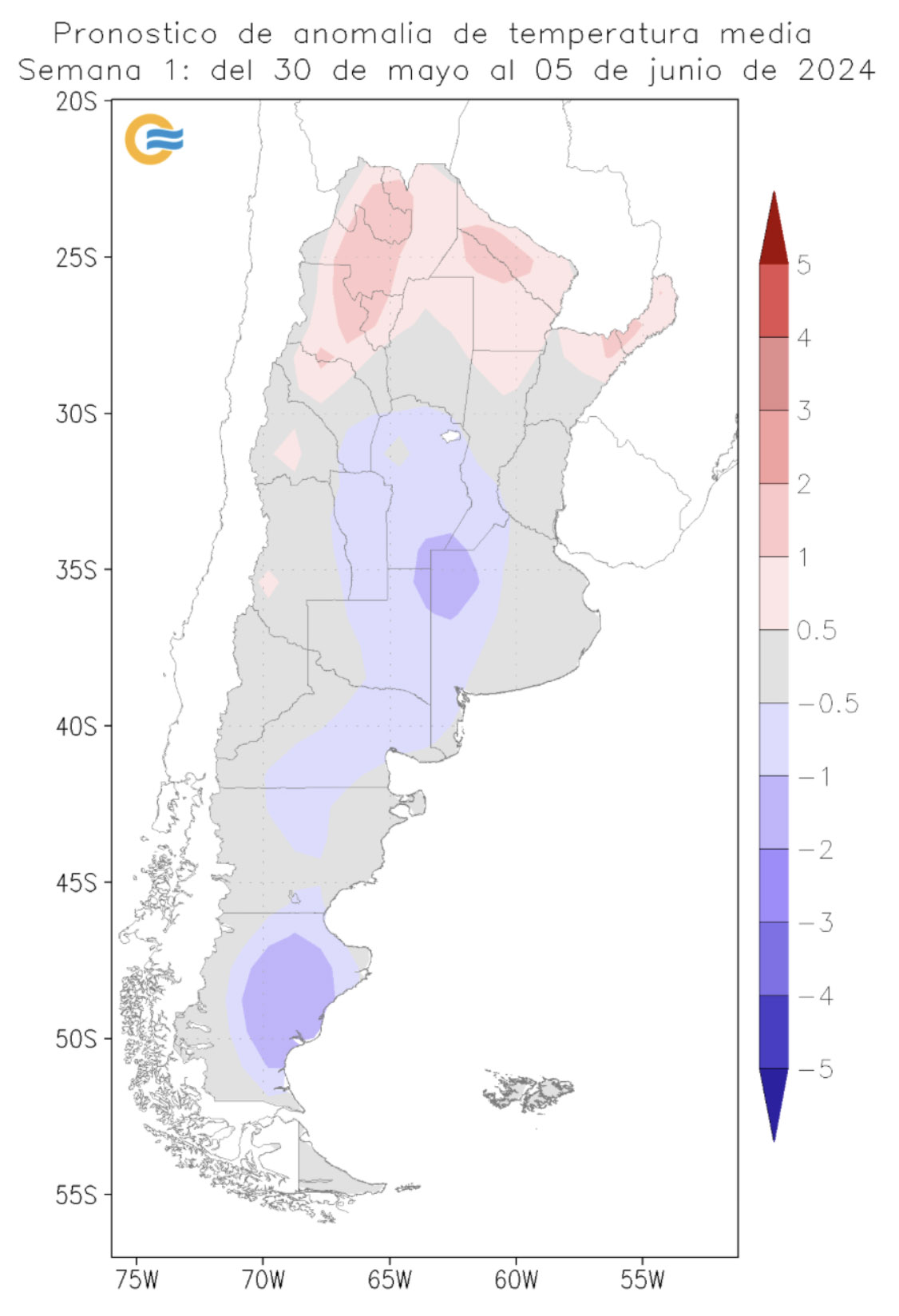
Argentinian National Meteorological Service (SMN) Average Temperature Anomaly Map for May 30 – 5 June
This week saw the first winter frosts hit bean producing regions in Argentina, topping off the difficult cycle that included serious drought in the early stages. Ivan Martin of Alimar explains: "Sadly, we had an unexpected episode of serious frosts in both the southern and northern regions of Salta this week, although the situation is more serious in the southern regions." Temperatures on 28 May reached -3°C and vegetation was reported to be covered with a thin layer of frost. "The extent of damage to bean crops remains to be seen," said Martin, "as we will have to wait until the harvest for a full assessment." Temperatures are set to improve over the next week with no minimum temperatures below 7°C between May 30 and June 5.

Weather / pulse producing regions / Russia weather / Argentina weather / Australia weather / Canada weather / India / USA / chickpeas / peas / lentils beans
Disclaimer: The opinions or views expressed in this publication are those of the authors or quoted persons. They do not purport to reflect the opinions or views of the Global Pulse Confederation or its members.